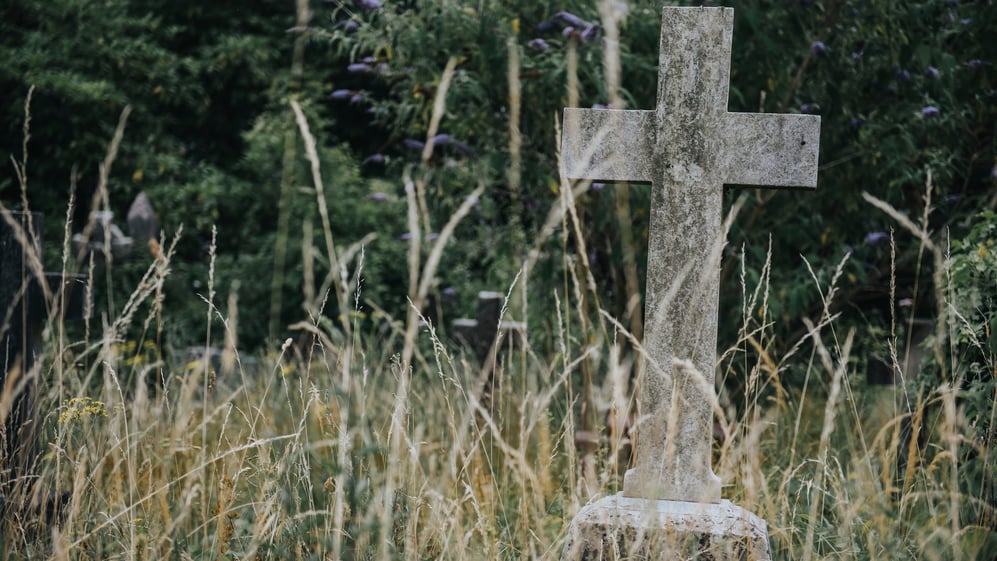David understood the reality of his own mortality. As king, he represented a people who lived under constant threat from foreign enemies, foes who would gladly have seen the Lord’s beloved die. Nevertheless, as we read in Psalm 16, David expresses relief and confidence, not that he would never die, but rather that he would not remain in the grave.
Consequences of Mortality
Like King David, we comprehend and observe the effects of sin on the human body. Even among the healthiest of people, changes due to age make their appearance roughly at age thirty. The metabolism slows, leading to weight gain. The body recovers from injury and illness more slowly than before. There are age spots and muscle loss. There is an adage that says, “Lament not old age, for it is a privilege denied to many.” The minor encouragement and positivity of this adage notwithstanding, the effects of old age are a bellwether, signaling coming death.
Yet, we take comfort in the same Good News as David, the coming Savior, Jesus Christ. David’s expression of hope was realized in our Redeemer, who, having suffered and died on the cross, did not see corruption in the tomb. Because we are joined to Christ in Holy Baptism, the Father who raised the Son from the dead will raise us as well, restoring our bodies without a mark of corruption.
Study
“I bless the Lord who gives me counsel; in the night also my heart instructs me. I have set the Lord always before me; because he is at my right hand, I shall not be shaken. Therefore my heart is glad, and my whole being rejoices; my flesh also dwells secure. For you will not abandon my soul to Sheol, or let your holy one see corruption. You make known to me the path of life; in your presence there is fullness of joy; at your right hand are pleasures forevermore.”
Psalm 16:7-11
- Considering what is age-appropriate, use this passage as an opportunity to discuss the reality of death, particularly what happens at a funeral. Although seeing even a preserved corpse of a loved one in the casket can be disturbing, it hides a more sobering reality. Explain to students that, even with the means of preservation, the body will eventually break down into dust. Recall God’s words in Genesis 3, “You are dust, and to dust you shall return.” Verify that students connect the deterioration of the body and death with sin. Specifically, that humanity disobeyed God, not merely that there is cancer, heart disease, or injury.
- Notice that David says that his “whole being rejoices.” One of the most subtle and often overlooked heresies in Christian teaching is the relationship between the body, mind, and spirit, especially as it relates to death. Although with the best intentions, Christians attempt to beguile the grieving with notions such as “The body is just a vessel. It dies, but the spirit lives on.” Explain to students that God created each of them with a whole being, of body, mind, and soul. The three were built to remain together, one no more valuable than another. The body, mind, and soul are all in need of salvation. It is vital that students understand that the body is not like a cocoon or orange peel to be cast away in favor of the internal contents.
- Some assert they are unable to believe in a God that would create a world in which there is disease, injury, old age, and death. Teach students that God did not create the world as it is. In Eden there was only life. Adam and Eve brought sin into the world of their own power and free will. It is sin that we perpetuate every day.
Law and Gospel
1. In sin we mistreat God’s gift of our bodies. This is manifested not only in what we do, but also what we fail to do. Although the breakdown of the body is inevitable, God expects us to make every effort to preserve His gift as best we can. Instead, we employ an unhealthy diet, avoid annual physicals, fail to take medication as prescribed, neglect dental hygiene, abuse alcohol and drugs, take unnecessary risks, and engage in sinful sexuality. Help students to understand that when we treat our bodies well, we are serving God as good stewards.
2. Jesus took on human flesh in the Virgin Mary, having a body, mind, and spirit. In this humanity Jesus lived a perfect life and suffered innocently on the cross. In the tomb Jesus did not see corruption, and was raised to life with a glorified body. Through Holy Baptism we are joined to Jesus. As He rose from the dead, so will we, raised without injury, disease, or old age.
Teaching Tips
To help students understand the reality of the body, mind, and soul as an integrated unit rather than the body as a shell containing the other two, try this. Place a tennis ball or similar object in a box. Rattle the ball in the box to illustrate the false teaching that the spirit “lives inside” the body. Then dip a cloth into water until it is fully saturated. The cloth represents the body and the water the mind and soul. Explain that a human being is more like a cloth soaked in water, fully integrated.
Teach students the sanctity of life and the comforts in Christ in the face of death with When Someone Dies: Find Comfort in Jesus by Julie Stiegemeyer.














